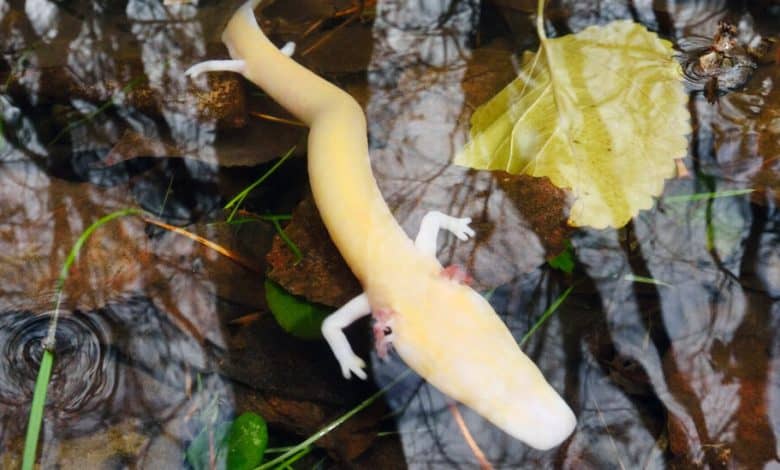Subterranean ‘Baby Dragons’ Are Revealed to Sneak to the Surface

Scientists have discovered that blind cave salamanders in northern Italy leave their underground homes to go on expeditions to the surface.
Eyeless and ghostly pale from millions of years spent below ground, the salamanders appear to commute back and forth to the sunny surface using springs where water bubbles up from hundreds of feet deep. Raoul Manenti, a zoology professor at the University of Milan, and colleagues described the unexpected discovery in a study published last month in the journal Ecology.
The salamanders, a species called olms, were once believed to be baby dragons. While we now know they won’t sprout wings, olms still seem like mythical creatures.
About the length of a banana, olms have eel-like bodies and spindly legs. Their faces are featureless except for a crown of frilly pink gills. When olms hatch, their eyes are quickly covered with skin, leaving them blind. They navigate their dark world by sensing vibrations, chemicals in the water and magnetic fields. Olms can live for more than a century and are famously thrifty with their energy (one olm in the Balkans didn’t move for seven years).
Over the centuries, a handful of olms had been spotted aboveground, but scientists assumed that they were the victims of flooding. Cave salamanders are so specialized for life underground, the thinking went, they couldn’t possibly survive outside their native caves.
To find an olm, Dr. Manenti and his team usually have to rappel down well-like openings to reach caves including the Trebiciano abyss, about as deep as the Eiffel Tower is tall. But in 2020, a group of spelunkers and ecologists, including Dr. Manenti, spotted an olm swimming in an aboveground spring. They were floored.